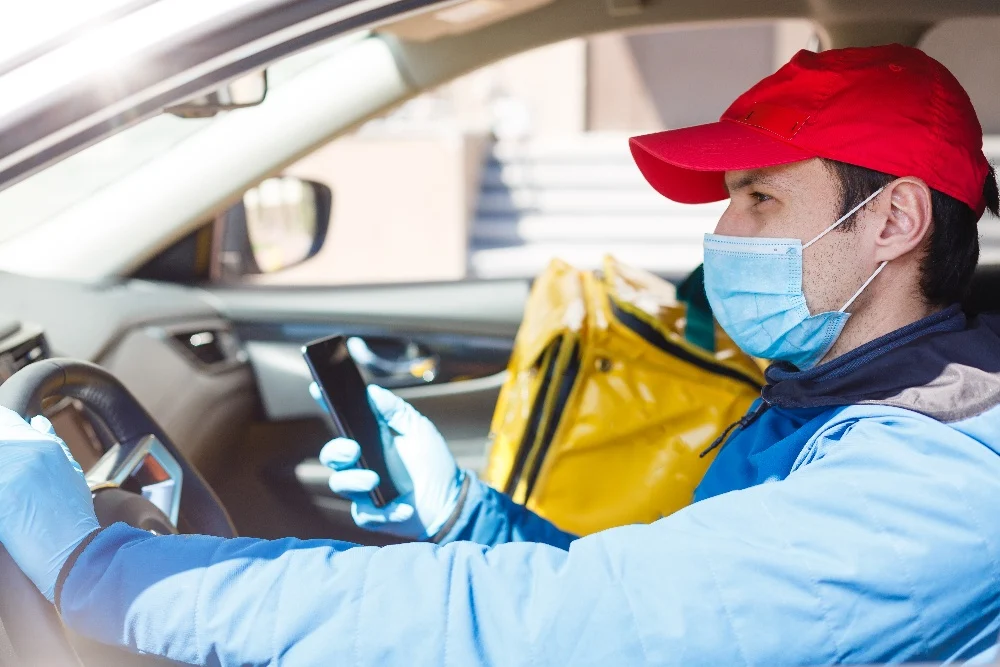Since its inception more than two decades ago, online food ordering and delivery has not only changed the way we eat, it’s changed the way food businesses operate.
For customers, it provides convenience and ease of use. For retail food establishments like restaurants and grocery stores, it gives them the opportunity to compete in a highly competitive market and provides new sales channels.
But while both consumers and retail food businesses have embraced digital options, regulatory authorities have been slow to come on board. In fact, it was only very recently that the first guidance document was published for third-party delivery services. And now, with customer complaints and concerns about safety during food delivery (especially in the time of COVID-19), has led to the formation of the Fair Food Delivery Act of 2020.
The new California only law, which came into effect on January 1, 2021, applies to all parties that are in the business of providing the service of online food ordering and delivery to the consumer. It’s intended to ensure that food remains safe from the point where it leaves the establishment to the point where it’s delivered to the customer.
The rocky relationship with third-party food delivery services
Since 2017, the revenue from food delivery services has nearly doubled. And never before have we been made more aware of food delivery services than during the “lockdown” period. The COVID-19 outbreak provided the ideal opportunity for retail food establishments to provide customers with freshly prepared meals and groceries, while customers can remain safely at home without exposing themselves to the risk of contracting the coronavirus.
Despite its usefulness during a lockdown period, there are other reasons why customers have gravitated towards online food delivery:
- Menu and food options can be viewed within an app;
- It’s easy to personalize orders;
- Most apps offer real-time tracking of delivery;
- Most apps offer 24/7 customer support facilities.
Unfortunately, the relationship between restaurants (or grocers) and third-party food delivery apps hasn’t been easy though—in fact, it is quite complicated. While they provide a crucial service (especially during a pandemic), it comes at a high cost. Not only do they pay exorbitant service and commission fees, but the lack of traffic control can result in poor customer experience. If a customer receives bad food, it often reflects badly on the business sending the food, not the one delivering it.
Who’s responsible for food safety with delivery?
For many years, Hazard Analysis and Critical Control Points (HACCP) has been successfully used in food processing facilities to prevent food safety hazards. It’s also been adapted as Process HACCP for retail food establishments (e.g., restaurants, hotels, commissaries, grocery stores, convenience stores, hospitals, etc.) to ensure food safety. But before 2020, no such guideline existed for third-party food delivery services.
Without regulation and oversight, restaurants or grocers may do all they can to maintain food safety (from sourcing, to preparation), but when they hand the food over to a 3rd party, to be delivered to the customer, it raises some questions.
- How will they maintain safe temperatures for food delivery?
- Is the vehicle clean or is there a chance for contamination?
- Is it transported in an actual food box, or is it simply sitting on the passenger seat?
- Will the food be tampered with?
These are all real and valid concerns that can impact the safety of your customers and the quality of the customer experience. In fact, customers are more likely to associate bad food or service with the food provider, as opposed to the food delivery company. This means one slip-up from the delivery driver, could result in serious consequences for your brand’s reputation.
How do third-party services ensure food delivery safety?
Not all third-party food delivery services operate the same way, but some do consider themselves a part of the food industry and take precautionary steps to make sure that food stays safe. This can include packing food into insulated boxes (to maintain optimum food temperatures) and proper labeling with safe handling information. Some even go a step further with the verification of their suppliers, food safety assessments, and third-party audits.
How can regulations reduce the food safety risks in the food delivery business?
The guidance document for Direct-to-Consumer (DTC) and Third-Party Delivery (TPD) services provides guidelines and recommendations for food delivery safety. It covers aspects like packaging and food storage practices, food receiving procedures, allergen control, temperature control, physical and chemical hazards, and even suggestions on how to deal with compromised food items. While these guidelines are extremely useful when conducting a “food delivery hazard analysis”, the use of it is voluntary. So unlike in processing facilities or food establishments, there are no industry regulations that govern food delivery.
That is, until now.
With the new Fair Food Delivery Act of 2020, there are a set of guidelines that govern not only how food delivery companies handle food, but also their relationship with YOUR customers.
Prior to the regulation, food delivery apps were not obligated to share customer information with the restaurant. So if an order takes longer to prepare, or a food safety issue arises, the food establishment’s reputation is tarnished and there is no way to follow-up with the customer. The Fair Food Delivery Act requires all food delivery apps in California to share a customer’s information with the restaurant. This means that the power of customer service is back in their hands—they can get feedback from customers, respond to complaints, and address any issues.
Download our guide on Policy Management
With this new law, food delivery services are also no longer allowed to arrange delivery of food products without authorization from the food establishment. They’re also prohibited from using the restaurant or grocer’s logo without their permission. The new regulation is only taking effect in California, but it’s not hard to imagine that other states will soon follow suit. In the meantime, what should your brand do?
Don’t neglect food safety when it comes to food delivery
Food delivery is here to stay. In 2018, the industry was said to be worth $82 billion and this amount is set to double by 2025. Where it was once a novelty, the changes brought about by COVID-19 made it essential for many customers. Whether you use DoorDash, UberEats, Deliveroo—or use your own delivery system— as a brand, food safety is one aspect you do not want to neglect.
Food safety doesn’t stop when the food goes out your door. It’s critical to ensure that food remains safe to eat until the point that it reaches your customer.
This is article 1 of 3 in our series on Food Safety and Delivery. For more information on this topic, check out our other articles on the topic:




